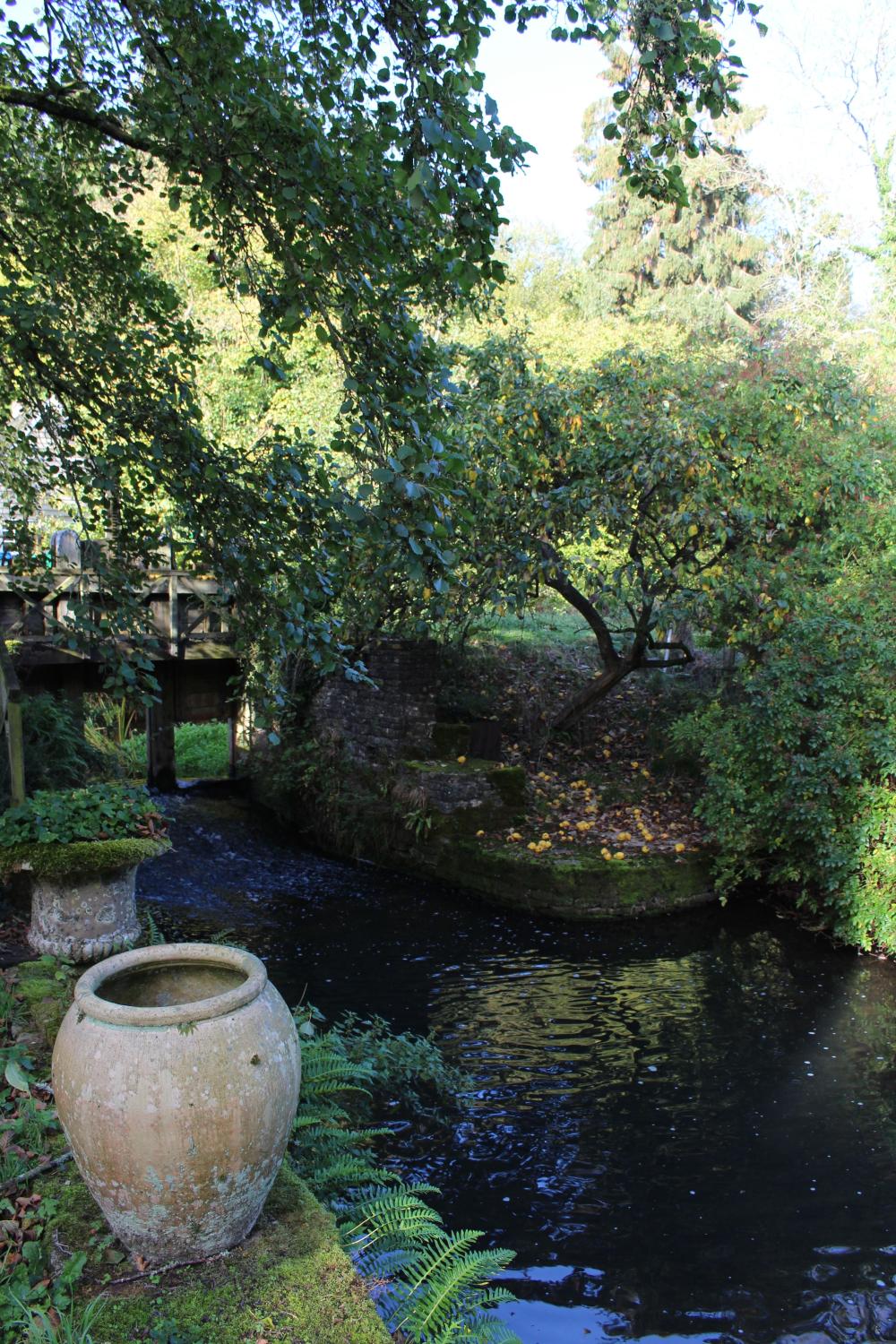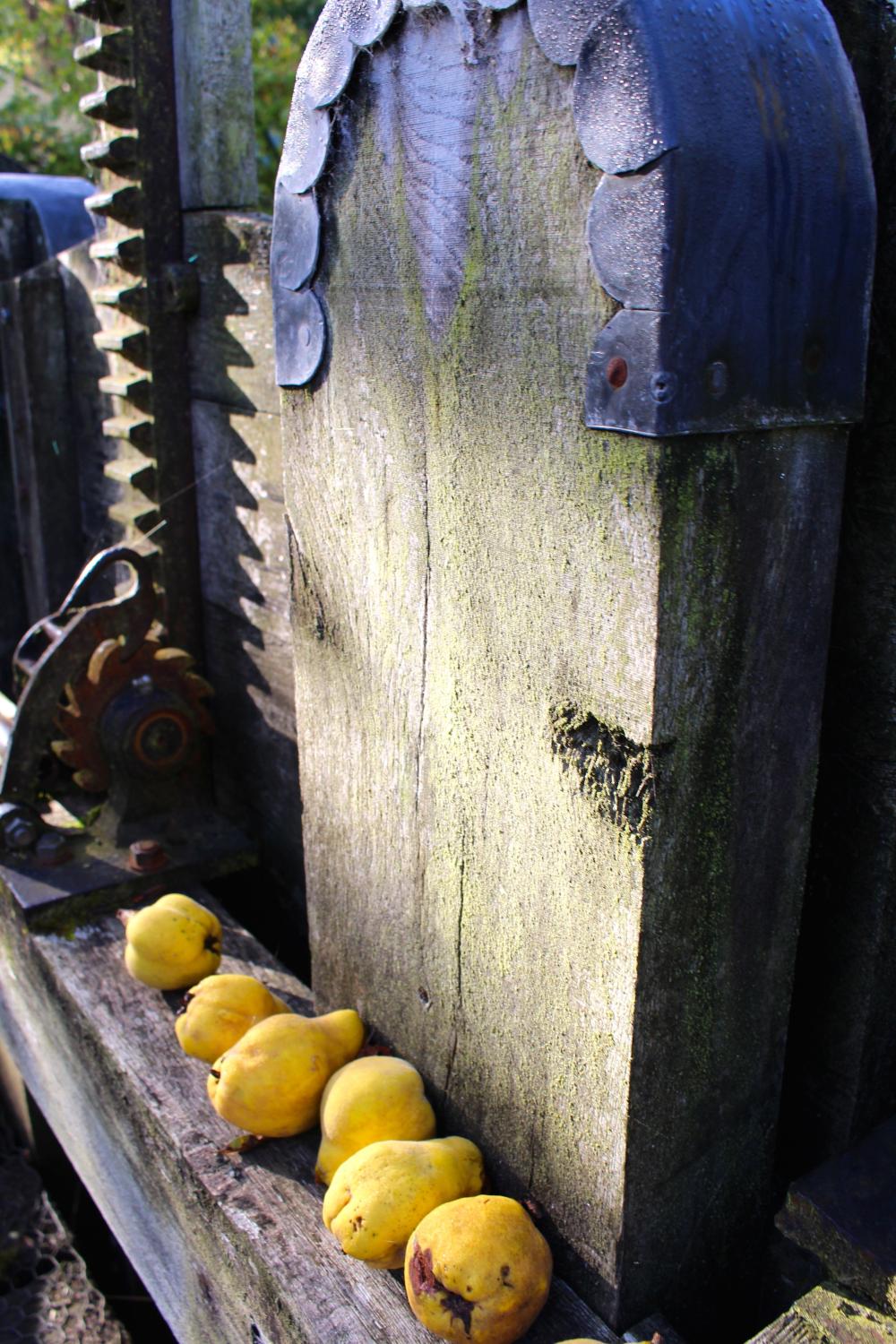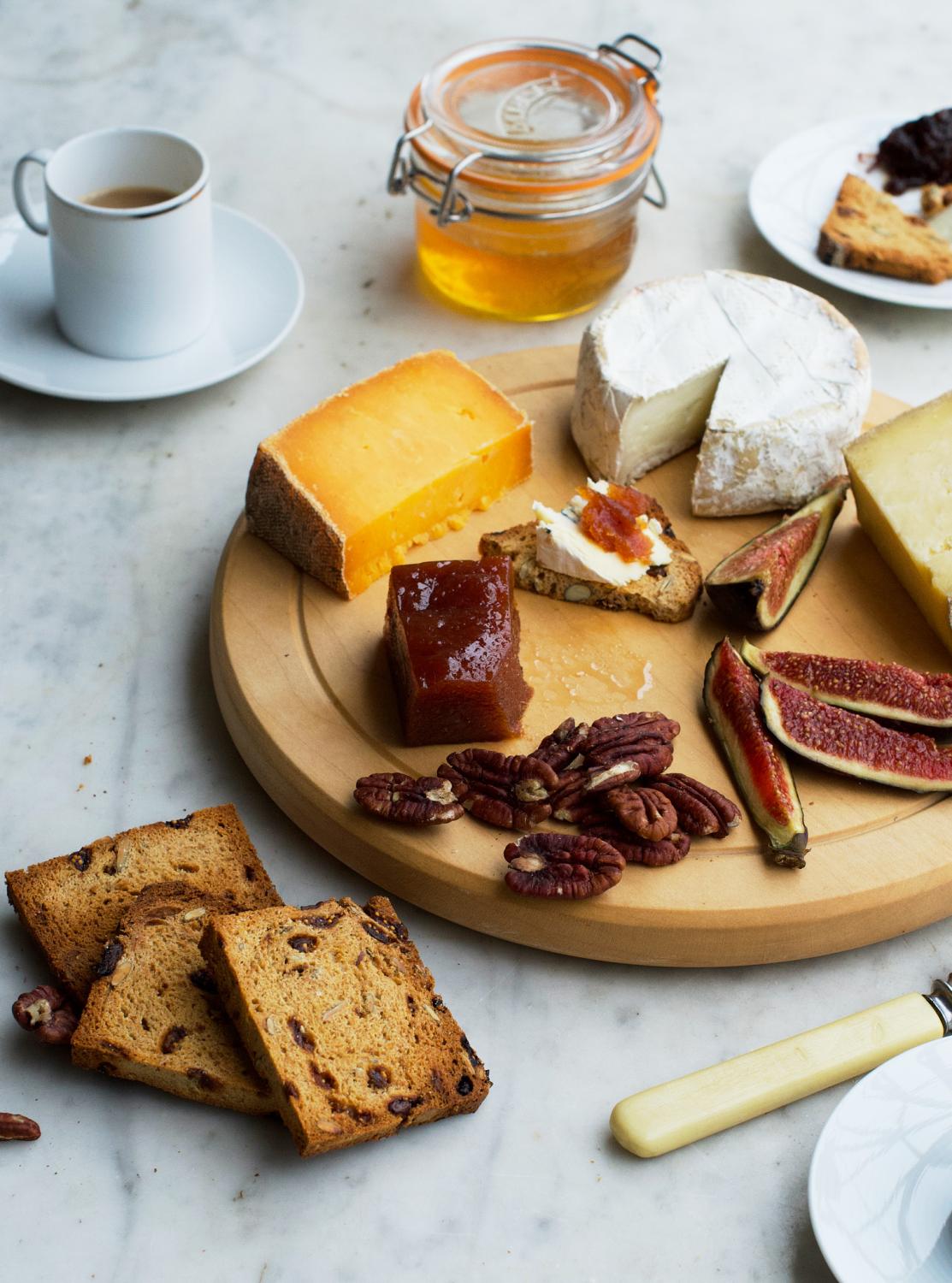We have a beautiful quince tree at the Mill, which overlooks the sluice gates and the mill race. Laden with golden fruit, we collect as many as we can each year to make membrillo. If you’re not familiar with membrillo, it’s a delicious type of firm quince paste, that is beautiful served with cheese. It goes particularly well with Manchego (known as Romeo e Julieta when served together in Spain), and makes a delicious after dinner alternative to a sweet pudding on an autumn or winter’s night.
This recipe is very easy to adapt to the amount of quinces you can get hold of, as you just use approximately an equal weight of sugar to the weight of your stewed quinces (once you’ve put them through a sieve or mouli to remove the cores and pips). The lemon juice is optional, and I only add this if the quince paste is too sweet and needs a little balancing. It will last for up to a year or more if stored correctly.
The quantities are flexible, but roughly 6 large quinces, post sieving and with the sugar added, will render a 30cm square of membrillo (of course, this depends how thick you make your square and how much of the pulp you remove, so use this as a rough guideline). To store our membrillo, we slice it into smaller squares and lay dried bay leaves on top of each square, then wrap them individually in baking parchment tied with twine. Keep them in the fridge.



